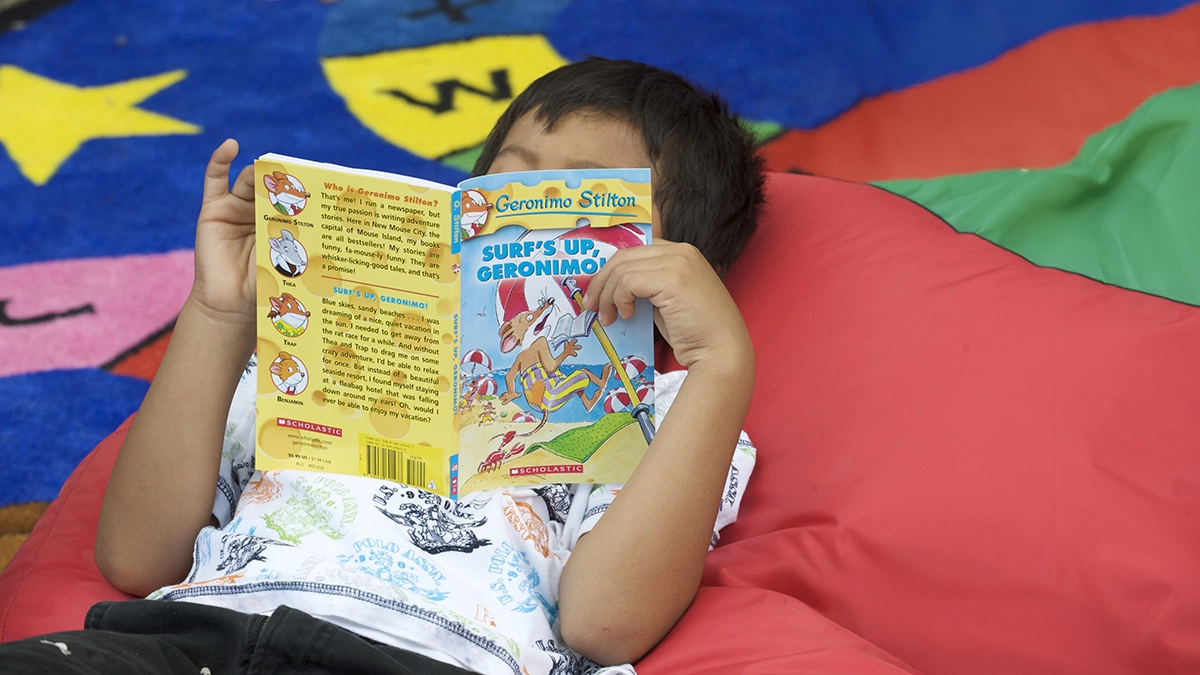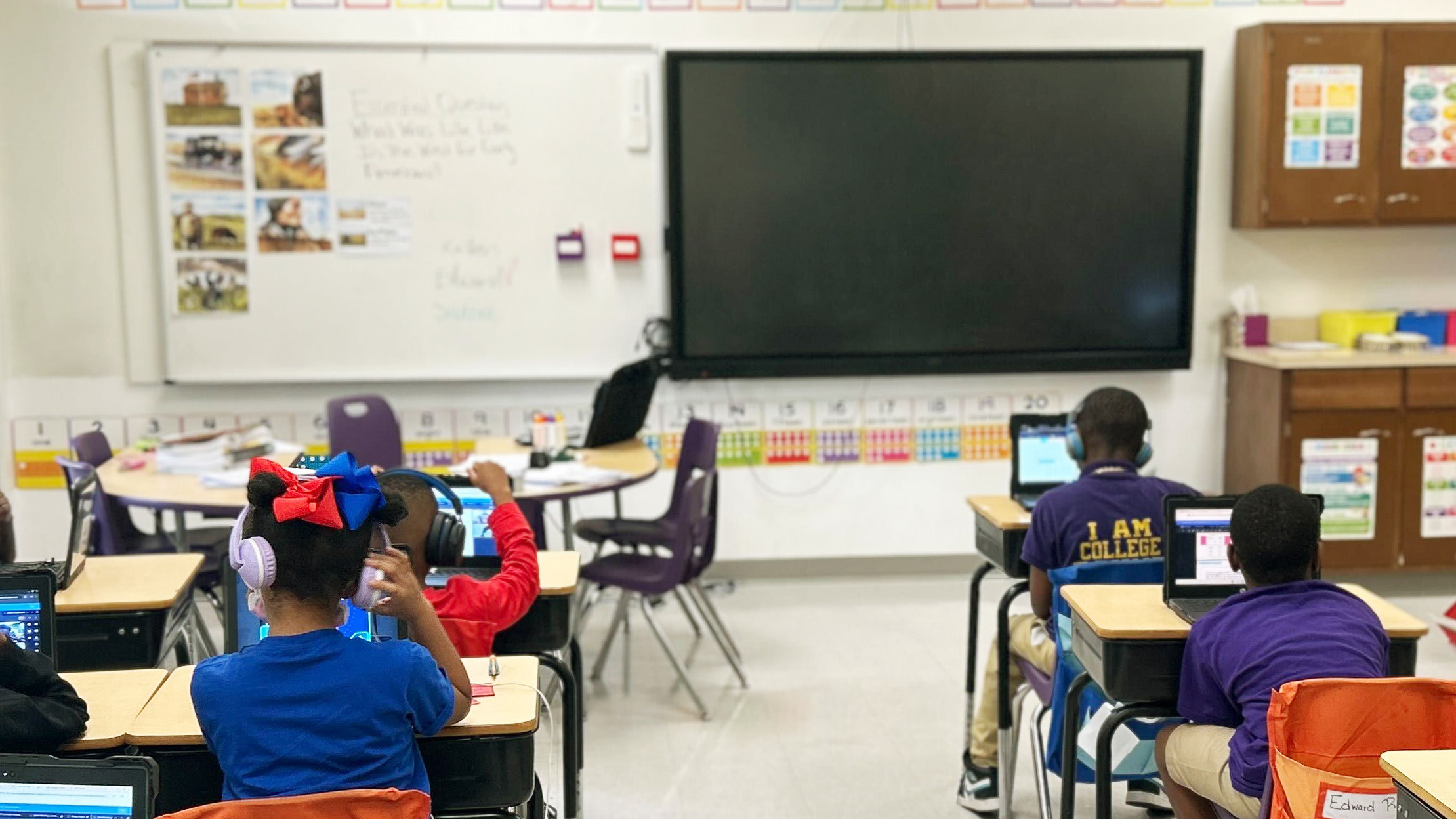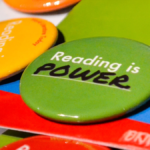A strong reading culture in a school district is nearly impossible to miss.
Literacy is celebrated — not just inside the classrooms but throughout school buildings. You see kids excited to uncover the new books on the school library shelves. You hear spontaneous conversations about reading in the teacher’s lounge and district administration offices.
They’re signs sure to warm any educator’s heart, but establishing a district and school climate that puts emphasis on reading isn’t just a feel-good initiative. Fostering a reading culture is a high-value tactic to improve reading outcomes that districts can launch with limited resource investment.
Wondering how to get started? We asked a few of the educators on the Ignite Reading academics team to share their best advice for district and school leaders to help you build a reading community in your district.
What Is a Reading Culture and Why Does It Matter?
Sometimes called a literacy culture or culture of literacy, the term reading culture typically refers to the environment that shapes how reading is perceived, valued, and experienced by everyone in the school community.
The goal is to create a climate where there’s a genuine excitement about reading — one that extends far beyond the literacy block. As a result, the school environment becomes a place where reading isn’t something kids do because they have to.
Reading is something they love to do because it’s woven into the fabric of a school district.
70% of kids list their teacher/school librarian as someone who encourages them to read for fun.
— Scholastic Kids and Family Reading Report: 8th Edition; 2022
When paired with evidence-based literacy instruction that outfits students with the tools they need to become fluent readers, this fervor for reading creates a snowball effect. As Dr. Keith Stanovich found in his landmark study of the Matthew Effect on reading, kids’ reading volume is predictive of academic achievements across subjects.
Simply put: The more kids read, the more they build vocabulary and background knowledge which fuel learning across all subjects.
At the same time, increased reading for pleasure carries a host of life skill building benefits, exposing students to more of the world around them, helping them to build empathy and other interpersonal skills.
How to Build a Reading Culture in Your School District
1. Make Reading Visible
The more often kids can see — and hear — teachers reading aloud, the better, says Julia Weber, an instructional designer on the Ignite Reading team.
“Read-alouds are perfect for students who aren’t yet reading on grade level,” Weber explains. “They can access the robust vocabulary and advanced concepts.”
The benefits of seeing adults actively engaging with books also plays a vital role in establishing reading as a pleasurable activity, bucking national trends that have shown a rising number of kids saying they “never or hardly ever” read for fun.
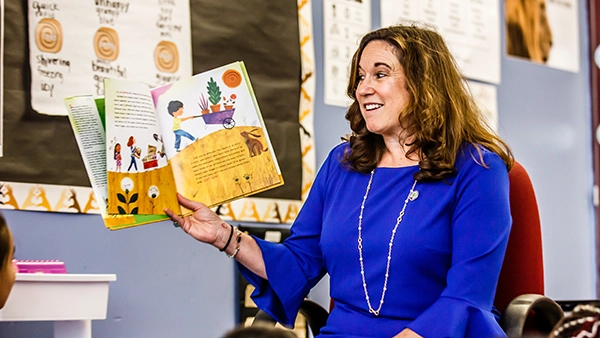
Classroom read-alouds conducted by the teacher, principal pop-ins to read to the class, visits from local authors, and special days dedicated to guest readers all provide students with chances to observe adults positively engaging with a book, while also building students’ vocabulary and background knowledge.
Partner School Spotlight: One School, One Book
Another innovative idea to make visibility a strong part of your reading culture comes from one of our partner schools, Hoosac Valley Elementary School in Adams, Mass.
Dubbed the One School, One Book campaign, the initiative allows students — and their families — to tune in online for a regular read-aloud, building family involvement in their children’s literacy development.
Members of the school community took turns recording themselves as they each read a selection of pages from Newberry Medal-winning novel The One and Only Ivan by Katherine Applegate. The school then shared the videos across social media to ensure access was free and easy for families to find.
2. Celebrate Reading Often
We’ve long known that modeled behaviors have an outsized impact on children’s behaviors. Is it any surprise then that kids are spending less time engaging in “pleasure reading” at the same time that adult fiction reading rates have sunk to an all-time low?
Reading enjoyment is an important prerequisite to becoming an effective learner, according to 2021 research from the Organisation for Economic Co-operation and Development (OECD).
What’s the best way to signal that reading is something fun? Be intentional about celebrating reading for reading’s sake.
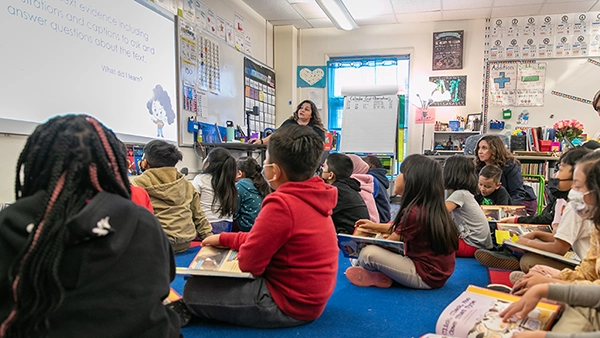
“[You can] find opportunities to celebrate reading in a variety of ways,” says Ignite Reading Literacy Specialist Nailah McNeil.
In McNeil’s 5th grade classroom, students looked forward to special days dedicated to the theme of a specific book.
“A popular day was ‘Camp Half-Blood Day’ from the book The Lightning Thief by Rick Riordan,” she recalls. “Students were allowed to dress up as their favorite mythological person/creature, and we would hold the similar ‘camp’ games that we read about in the book.”
Involving parents and guardians in some literacy celebrations is key to ensure your district reading culture has buy-in from the community.
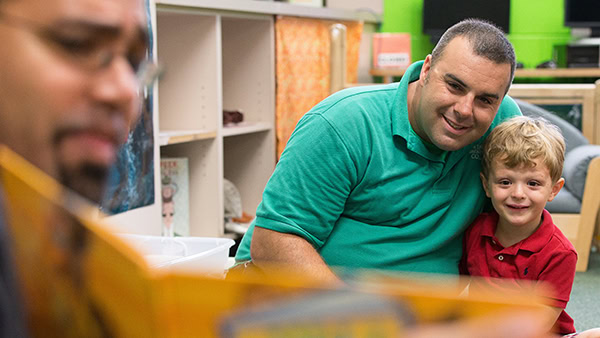
On Camp Half-Blood Day, for example, parents and guardians were invited into the school building to help turn McNeil’s classroom into a restaurant serving up the same foods characters ate in the book.
Celebrations can and should also spread beyond single classrooms, McNeil says. She suggests schools add at least a few of these ideas to their planning to strengthen their reading culture:
- Conduct monthly or seasonal reading challenges.
- Hold school-wide literacy events that bring families to the building.
- Set up book recommendation bulletin boards in the school library or hallways.
- Invite students or staff to share book recommendations during the morning announcements.
- Create literacy/reading awards that celebrate different types of readers.
Partner School Spotlight: Design Your Own Bookmark
Steal this fun celebration idea: Ignite Reading partner school James Bowie Elementary in Baytown, Texas, put an artistic spin on their literacy celebration with a Design Your Own Bookmark competition. Contest winners were chosen for each grade level, and each student was able to select a book from the school book fair to take home.
3. Establish Dedicated Reading Environments
Establishing dedicated reading environments within the school buildings is a good way to physically embody your district commitment to literacy and strengthen your district reading culture.
Not only do these dedicated spaces serve as visual reminders throughout campus buildings that reading is central to your district’s identity, but these spaces also provide students with psychological ownership of their reading experiences.
54% of kids get the books they read for fun from school.
— Scholastic Kids and Family Reading Report: 8th Edition; 2022

In practice, Weber says these spaces can take the form of classroom reading nooks or spaces in the school library where students are encouraged to simply chill and read.
Already limited on available instructional space? A dedicated reading space doesn’t always have to take the form of a place for students to physically sit and read, Weber says.
Try incorporating these options into your reading culture plan instead:
- Set up a student book recommendation display with the recommended book, a picture of the kid, and a summary of why they thought the book should be read. This can be set up inside the school library, in a display case on campus, or even created in poster form to hang near a building entrance for maximum visibility. This social proof — reinforcing that their peers value reading and find genuine enjoyment in books — can act as a silent motivator for kids who have yet to board the reading for fun train.
- Plan short “book talks,” dedicating time (rather than space) for kids or adults to share the latest “juicy” book they have read with a class, describing what it was about and why they should read it. A 2-minute presentation can be added to the morning announcements plan, scheduled for beginning of school assemblies, or even added to the district newsletter.
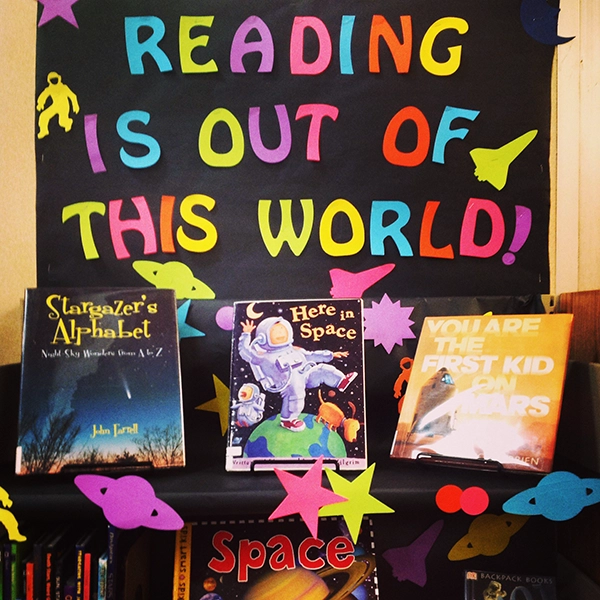
4. Improve Access to Books
It’s no secret that kids who grow up in book-rich environments typically develop stronger reading skills and vocabularies than peers who don’t have this same advantage. This is true even when socioeconomic background is taken into account.
This makes creating initiatives that increase students’ access to books a fundamental element of building a strong reading culture.
Partner School District Spotlight: The Lit Limo
Ignite Reading partner district Richmond Public Schools in Virginia has teamed up with the Richmond Public Library to take reading on the road. The district “Lit Limo” travels from school to school, giving students a chance to sign up for a library card and delivering books kids can take home to add to their home libraries.
Weber suggests setting up a “take a book” table at all school events, stocked with donated books that families can take home. Whenever possible, ensure selections are reflective of your district’s student population. If there is a high percentage of multilingual learners in your student body, for example, include books in students’ native languages.
Other simple ways to get more books into kids’ hands include:
- Invite the public library to set up a table on family night to sign families up for a library card and provide them with information on the library’s myriad services.
- Partner with non-profits that supply new or gently used books to schools, and use books in place of other reward systems.
- Open the school library before and after school during latchkey hours to provide additional access for students to stop in and check out a book.
Partner School District Spotlight: Hop on the Book Bus
At Ignite Reading partner district Spotsylvania County Public Schools in Virginia, students get excited when they hear the book bus is rolling into town, loaded down with donated books. Students are able to look through the various books available and choose one to take home.
More Educator Resources
Looking for more tips to build your district or school reading culture? Take a look at these resources:
- How to Boost Parental Involvement in Reading — Tips for Districts & Schools — Explore strategies from the Ignite Reading academics team to help forge stronger connections with parents, guardians, and other caregivers.
- How to Build a Literacy Ecosystem for Your School That Really Works — Explore actionable tips for building a Science of Reading-aligned literacy framework in your district or school to drive student achievement.
- Tackle Chronic Absenteeism in the School Library — Learn how schools are turning to the power of the school library to encourage student attendance.
Images via U.S. Department of Education/Flickr, Franklin Park Library/Flickr
